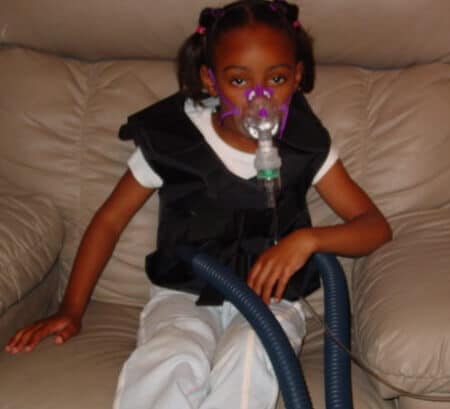A few minutes after you stop breathing, whether because of a piece of meat stuck in your throat, or following an acute asthma attack or a lung injury, the brain already begins to strike. And immediately after, cardiac arrest and death. The only first aid that emergency teams and hospital workers can provide is to insert a breathing tube through the mouth - a dangerous and time-consuming process.

A new solution, which can be injected into the body, can keep such patients alive for 15 minutes or even more - precious and crucial time that allows the victims to be rushed to a hospital or to perform surgical operations in an operating room. The solution contains microscopic oxygen bubbles that the blood can absorb within seconds. The bubbles are small enough not to cause a respiratory embolism - an air pocket that blocks blood flow and causes a stroke or heart attack.
To create this life-saving foam, John Kheir, a cardiologist at Children's Hospital in Boston, and his colleagues adopted a nanotechnology medical method that is already in use. Microscopic particles wrapped in lipid membranes are already used to deliver drugs and contrast agents for ultrasound imaging. Keir and his team passed a high-pressure stream of phospholipids through an oxygen chamber and used sound waves to accelerate a process in which the components self-organize to form microscopic particles. The researchers then used a centrifuge to get as concentrated a solution as possible of these micro-particles. Each microscopic bubble that is four microns in diameter contains pure oxygen surrounded by a fatty membrane that is only a few nanometers thick.
Since the oxygen pressure in the bubbles is higher than that in the bloodstream, the gas passes by diffusion to the red blood cells with which it comes in contact. As soon as the bubble empties, the membrane collapses into a sort of disc less than a micron thick that is able to easily pass through the bloodstream.

In the experiment, researchers blocked the airways of anesthetized rabbits for 15 minutes. Rabbits that were injected with the solution were much less likely to suffer cardiac arrest or any damage to any other organ, compared to a control group that received an injection of a saline solution - and that without a single breath.
The approach "is a fairly novel idea compared to what we have now," says Raymond Koehler of Johns Hopkins University, who is not involved in the research, because all emergency procedures involving oxygen currently require lung activity - even if minimal.
One disadvantage of the new method stems from the great speed with which oxygen is absorbed in the blood. This requires a continuous infusion of a saline solution that helps the foam flow smoothly into the bloodstream. The amount of solution that a patient will receive after 15 minutes can cause edema, fluid overload that can cause heart failure. Keir's team is trying to improve the formulation of the foam in a way that will reduce the amount of salt solution.
Another concern is that in the absence of normal breathing, carbon dioxide accumulates in the body, which can be toxic. But, as Koehler says, the body can manage with a small excess of carbon dioxide better than it can manage with the complete absence of oxygen. If the microbubbles prove themselves in other animal experiments (and following them in humans), the solution could help emergency teams and operating room technicians buy precious and crucial minutes before they can perform other life-saving treatments. In such situations, says Koehler, "you want to have a backup plan."



3 תגובות
Criticism because maybe just injecting huge amounts of saline into animals has an effect, even if minor, and this is something that needs to be offset. In addition, this puts the conditions of the experiment under scrutiny - perhaps the preparation has no effect, but the conditions under which the experiment was conducted are problematic.
Orit - although our feeling of needing to breathe is mainly controlled by CO2, but here we are not talking about people who can breathe but about those who are unconscious and breathing, for example in a situation of suffocation from a foreign body (as was done in the experiment) or of CPR.
In such a situation there is a huge accumulation of CO2, but the stimulus for breathing will not actually result in breathing, and the lack of oxygen causes damage to the tissues.
The preparation allows the flow of oxygen into the blood in a way that bypasses the soul. Effective ventilation in emergency medical conditions is complicated and time-consuming, and the device only requires access to an open vein. If you are terribly afraid of the effects of CO2 (even though, as we said, in conditions of suffocation, its accumulation only causes a trigger for breathing, but the resulting acidification of the blood is also problematic) you can add a base or a chlorinator to CO2.
In my opinion, by the way, this is nothing less than genius. A new way to breathe!
The feeling of suffocation and the suffocation itself is first caused by an excess of carbon dioxide and not by a lack of oxygen. A lack of oxygen is a secondary cause of suffocation, so it is doubtful that this method will solve anything
I didn't understand what the control group was for in this experiment?
Isn't there accumulated knowledge of thousands of years and millions of people and animals that stopping breathing for 15 minutes causes damage and death?
It is true that there is the correct order of the experiment. But I think in this case they would have been given up.